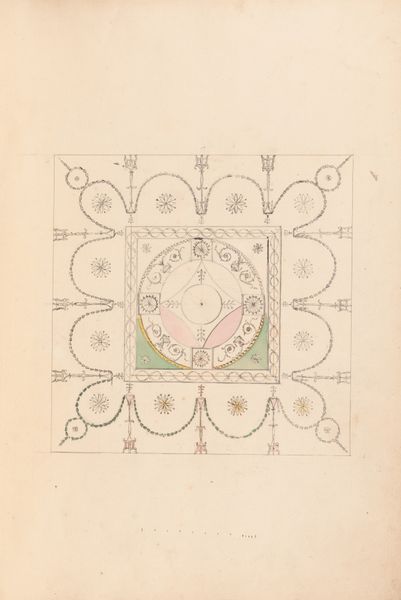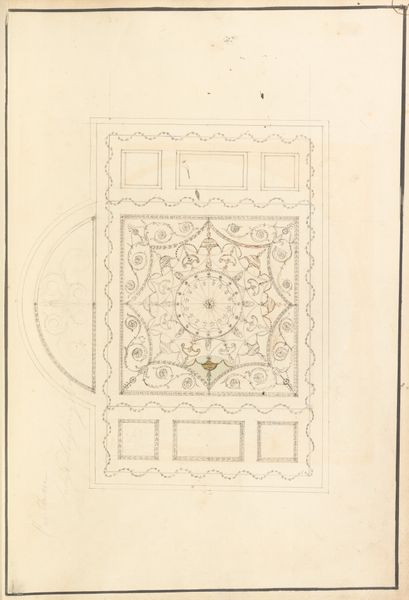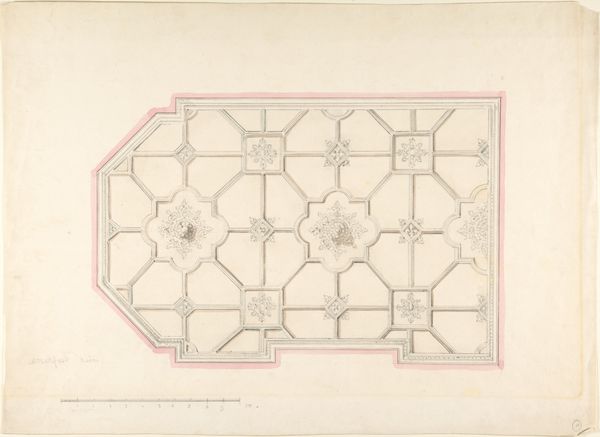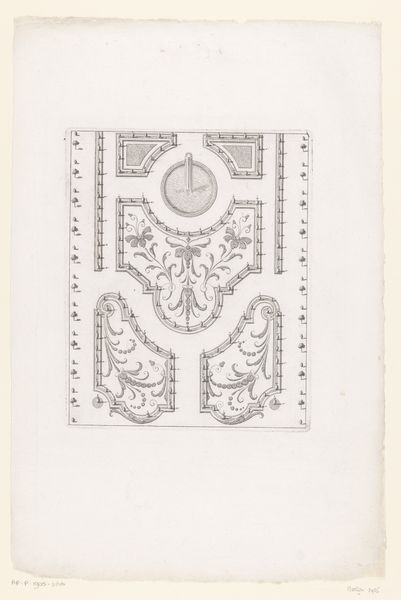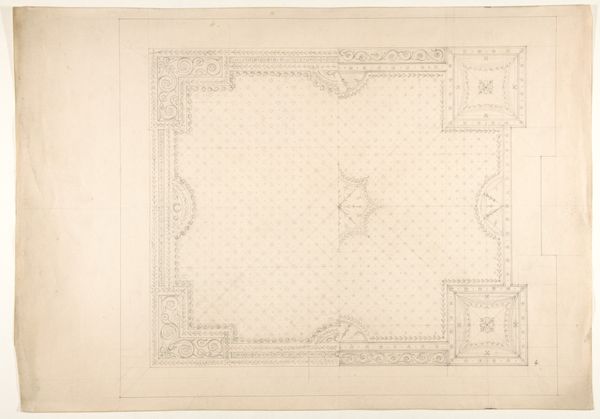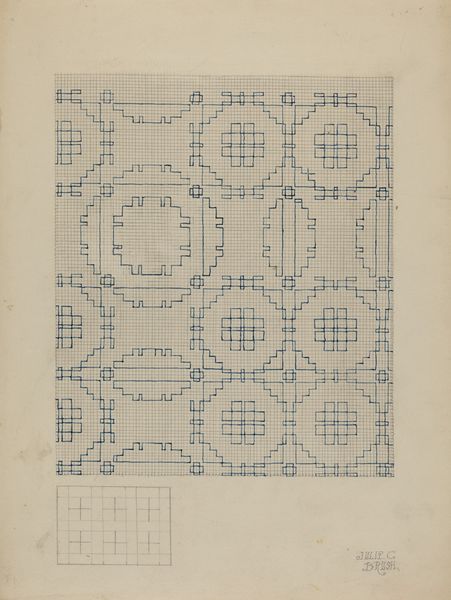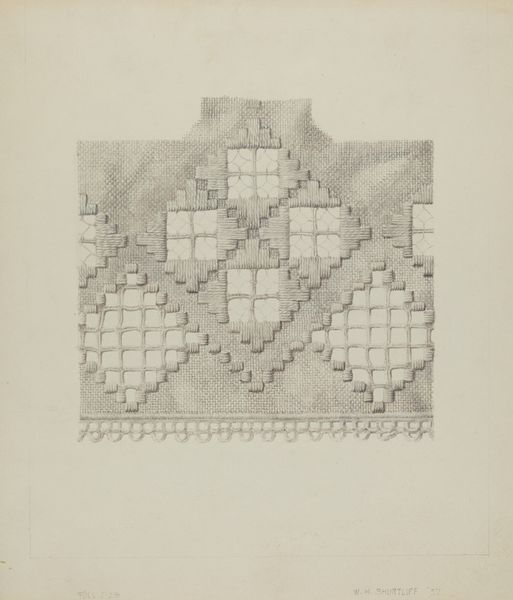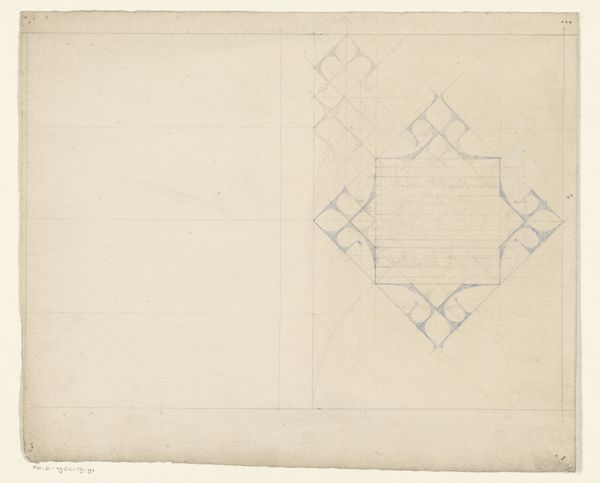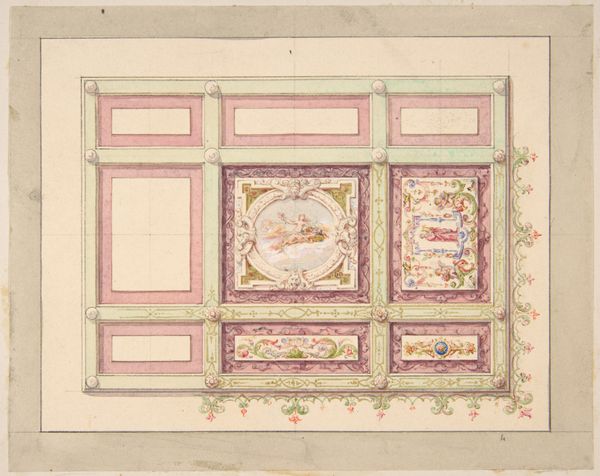
drawing, paper
#
drawing
#
paper
#
geometric
#
abstraction
Copyright: Public Domain
Curator: Before us we have “Gitter”, a drawing on paper by Karl Ballenberger, housed here at the Städel Museum. Editor: It looks like an intricate pattern. Pink diamond shapes linked together, intersected by fine lines…almost feels like I'm peering into some strange tiled room, or maybe the diagram for some peculiar loom work. Curator: Your initial observation is insightful. Notice the visible pencil lines, the way the artist structures and organizes space through geometric forms. It prompts questions about design process and production, the interplay between craft and pure art. The paper itself bears the marks of its making, the soft texture practically invites tactile investigation, which, sadly, we cannot indulge. Editor: Interesting perspective! My mind went immediately to heraldry or mosaic work, and perhaps even an early map or celestial chart. The squares evoke family crests, little symbolic containers linked across this grid. The touches of blue and yellow might represent particular virtues or regions in such systems, lending deeper, culturally significant interpretations to this geometric abstract. Curator: Certainly. But beyond symbolic speculation, I am also curious about what these specific shades of pigments were accessible when it was made. Were these mineral based or artificially derived? That's to say, the material dictates some part of the process, and in turn, influences what is presented to us. The economy of this particular color use reflects what was likely considered valuable by this society during the period. Editor: Perhaps! However, that scarcity, those hues could represent hope or renewal during troubled times for its contemporaries. That's the fun part about artwork, the intersection where the symbolic meets the practical to create lasting impact, which might in turn reflect our contemporary feelings! Curator: I agree there’s always more to discover through art’s evocative language. Thanks to close looking, we may interpret some new possibilities that shape meaning and inspire curiosity to future artists. Editor: Indeed! Thank you.
Comments
No comments
Be the first to comment and join the conversation on the ultimate creative platform.
